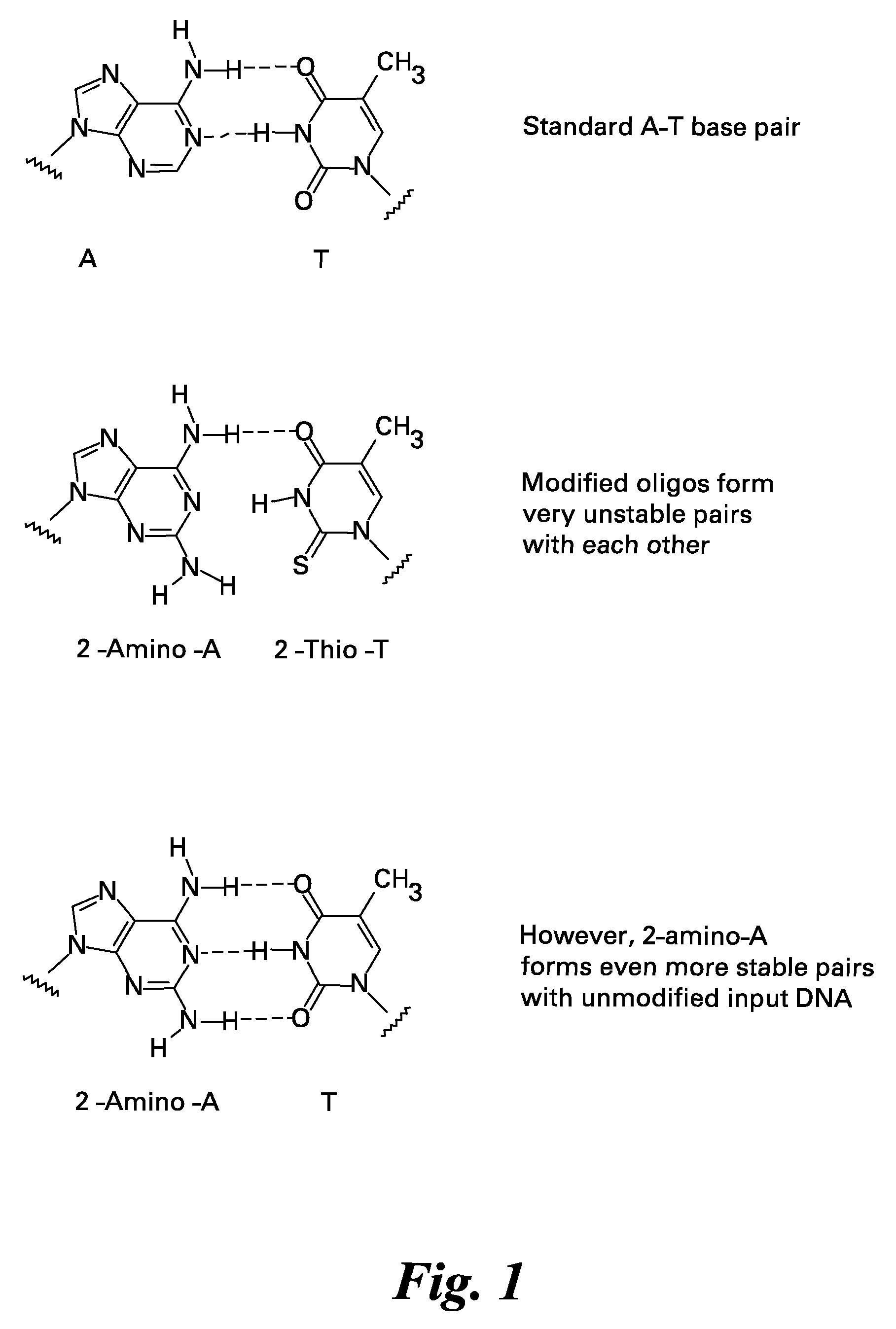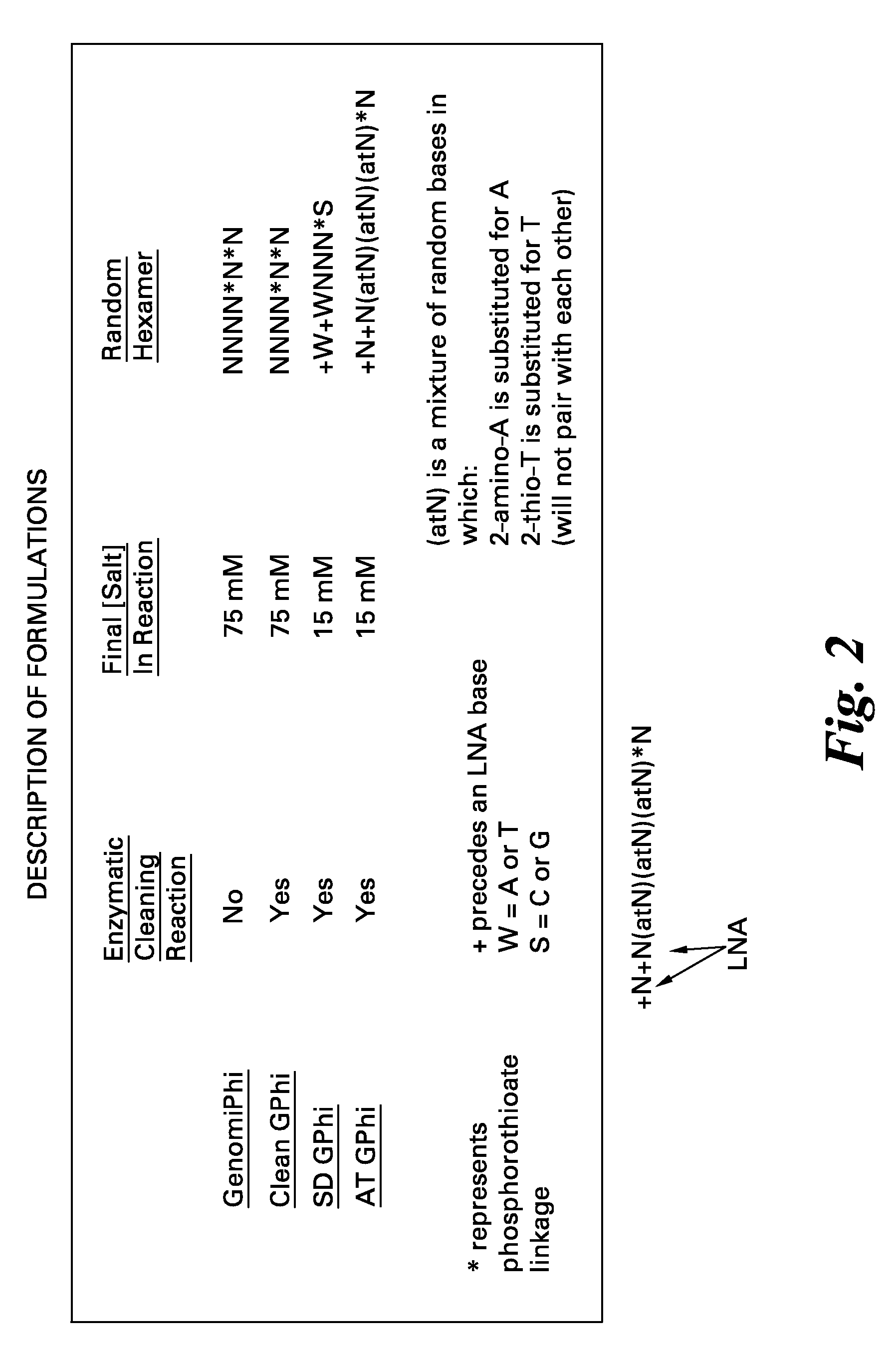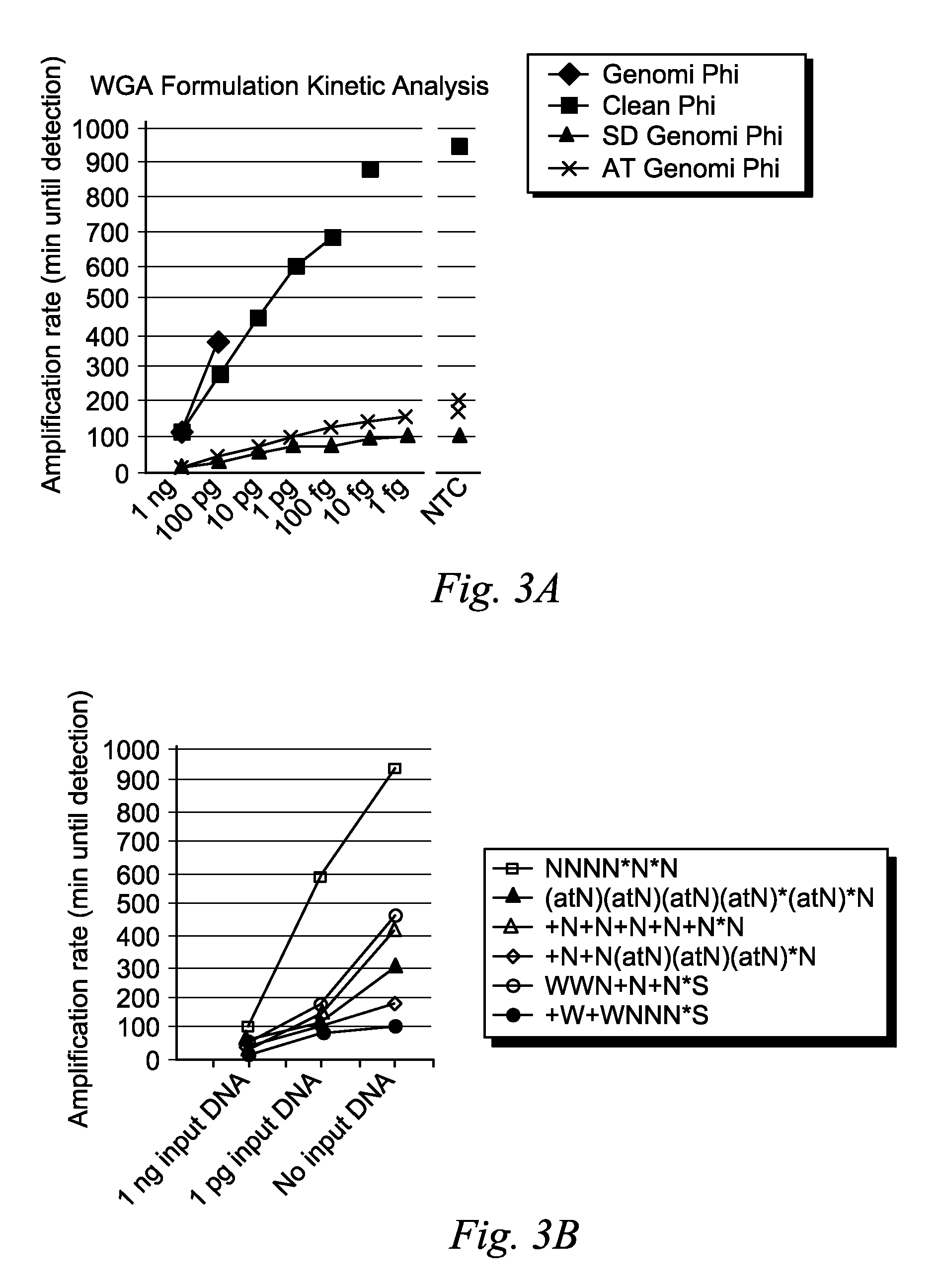Methods and kits for reducing non-specific nucleic acid amplification
a nucleic acid amplification and kit technology, applied in the field of methods and kits for the amplification of target nucleic acids of interest, can solve the problems of high background signal, inability to effectively utilize many of these techniques in critical nucleic acids, incorrect diagnosis, etc., to achieve the effect of efficiently amplifying the desired target nucleic acid and minimizing or preventing the production of unwanted primer-dimers
- Summary
- Abstract
- Description
- Claims
- Application Information
AI Technical Summary
Benefits of technology
Problems solved by technology
Method used
Image
Examples
example 1
Improvement in MDA Speed and Sensitivity
[0057]Amplification reactions were performed using the standard GenomiPhi™ kit with the hexamer sequence NNNN*N*N and 75 mM KCl or utilizing the “cleaned” GenomiPhi (see, for example, U.S. Patent Application Publication No. 2009 / 0155859), GenomiPhi SD (e.g., U.S. Pat. No. 7,993,839), or GenomiPhi AT formulations. Real-time amplification was performed by adding a small amount of SYBR green I to the amplification mixture and monitoring fluorescence increase over time in a Tecan plate reader using a dilution series of Bacillus subtilis chromosomal DNA. A no template control was also analyzed (NTC).
[0058]The threshold time for DNA amplification signal to increase over background for each reaction was plotted out versus the amount of DNA added as input template into the reaction. Reactions containing primers with LNA and amino-A / thio-T showed an approximately 10 fold increase in amplification kinetics. The results are summarized in FIGS. 3A and 3B....
example 2
Oligonucleotides Containing 2-Amino-dA and 2-Thio-dT Improve MDA Coverage and Overall Amplification Bias
[0059]Standard GenomiPhi™ reactions or MDA reactions with the indicated formulations were performed with 100 pg B. subtilis input DNA. Total amplification in the reactions was approximately 20.000-fold. Amplified DNA was processed into libraries and subjected to Illumina GA whole-genome sequencing with a 51 nucleotide read length. 8-10 million reads for each sample were mapped to the B. subtilis reference genome. FIG. 4A provides a histogram that maps coverage level across the length of the genome. Relative standard deviations were calculated by the following formula: coverage standard deviation / mean coverage*100. The number of coverage gaps and the average lengths of those gaps are also indicated. FIG. 4B provides bar graphs comparing the formulations.
example 3
Oligonucleotides Containing 2-Amino-dA and 2-Thio-dT Improve MDA Sequence Bias
[0060]For the amplification reactions described in Example 3, the coverage level was determined for each 100 base pair window of the genome. GC content of the windows was plotted against the fractional coverage of windows that had that GC content. The results are presented in FIG. 5 and indicate that the inclusion of amino-A / thio-T and LNA nucleotides in the amplification primer provide both increased representative amplification and decreased amplification bias.
PUM
| Property | Measurement | Unit |
|---|---|---|
| Tm | aaaaa | aaaaa |
| Tm | aaaaa | aaaaa |
| temperature | aaaaa | aaaaa |
Abstract
Description
Claims
Application Information
 Login to View More
Login to View More - R&D
- Intellectual Property
- Life Sciences
- Materials
- Tech Scout
- Unparalleled Data Quality
- Higher Quality Content
- 60% Fewer Hallucinations
Browse by: Latest US Patents, China's latest patents, Technical Efficacy Thesaurus, Application Domain, Technology Topic, Popular Technical Reports.
© 2025 PatSnap. All rights reserved.Legal|Privacy policy|Modern Slavery Act Transparency Statement|Sitemap|About US| Contact US: help@patsnap.com



